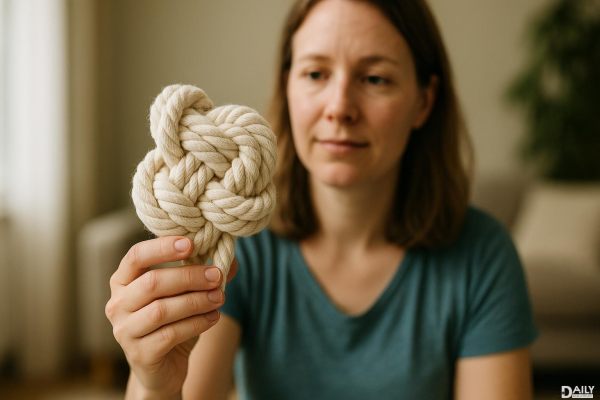Weighted blankets have become a go-to solution for many people battling anxiety, especially when it creeps in during those quiet moments before sleep. These cozy, heavy blankets work by mimicking the sensation of a deep-pressure hug, which can help calm the nervous system and ease tension. But not all weighted blankets are created equal—choosing the right one involves more than just grabbing the first one you see. From weight and size to material and fill, there’s a lot to consider to make sure you’re getting the most out of your weighted blanket experience.
The Science Behind Weighted Blankets
Weighted blankets operate on the principle of deep pressure stimulation (DPS), a therapeutic technique that applies gentle, even pressure across the body. This pressure triggers the release of serotonin and melatonin—hormones that promote relaxation and sleep—while reducing cortisol, the stress hormone. Think of it like a full-body hug that tells your brain, "Hey, it's okay to chill out." Studies have shown that weighted blankets can help with conditions like anxiety, insomnia, and even ADHD by providing a grounding effect that makes you feel more secure and less scattered. But for this to work effectively, the blanket needs to be the right weight and fit for your body.
Finding Your Perfect Weight
The general rule of thumb is to choose a blanket that’s around 10% of your body weight. So if you weigh 150 pounds, a 15-pound blanket should be ideal. But here’s the thing: this isn’t a one-size-fits-all situation. Some people prefer a slightly lighter or heavier feel depending on their comfort level. If you’re someone who moves a lot in your sleep or tends to feel trapped under heavy covers, going a few pounds lighter might be the way to go. On the flip side, if you love that deep, cocoon-like sensation, you might opt for something closer to 12% of your body weight. The key is to test it out—many companies offer trial periods so you can see what works best before committing.
Size Matters (More Than You Think)
A weighted blanket should be large enough to cover your body without hanging too far off the bed. If it’s too small, the weight won’t distribute evenly, which can make it feel lumpy or uneven. Most standard weighted blankets come in sizes like twin, queen, or king, but if you’re taller or broader, you might need to look for an oversized option. Another factor to consider is whether you share a bed—if your partner isn’t into weighted blankets, you might want a smaller one just for your side of the bed. And if you’re using it on the couch for movie nights, a throw-sized weighted blanket could be perfect.
Material and Fill: What’s Inside Counts
The two most common fill types for weighted blankets are plastic poly pellets and glass beads. Poly pellets are more affordable but can feel a bit lumpy, while glass beads offer a smoother, more fluid weight distribution. Then there’s the outer fabric—cotton is breathable and great for hot sleepers, while minky or fleece adds extra coziness for colder nights. Some blankets even come with cooling technology if you tend to overheat. And if you have sensory sensitivities, pay attention to texture—some people love the softness of sherpa, while others prefer the crisp feel of linen.
Who Should (and Shouldn’t) Use a Weighted Blanket
While weighted blankets can be a game-changer for adults with anxiety or sleep issues, they’re not for everyone. Kids under six or those with respiratory conditions, circulatory problems, or mobility issues should avoid them unless approved by a doctor. Even for adults, if you have conditions like sleep apnea or claustrophobia, a weighted blanket might do more harm than good. And if you’re pregnant, it’s best to check with your OB-GYN before using one. The good news? There are plenty of alternatives, like compression wraps or lighter sensory blankets, that can offer similar benefits without the risks.
Making the Most of Your Weighted Blanket
Once you’ve found your perfect match, there are a few tricks to maximize its benefits. Try using it during the day while reading or watching TV to help train your body to associate it with relaxation. If you’re using it for sleep, pair it with other calming routines like dimming the lights or doing a short meditation. And don’t forget to care for your blanket—most are machine washable, but always check the label to avoid damaging the fill. Over time, you might find that your weighted blanket becomes a non-negotiable part of your wind-down routine, offering comfort on even the most stressful days.
At the end of the day, a weighted blanket is a personal tool—what works for one person might not work for another. But with the right weight, size, and material, it can be a powerful way to ease anxiety and improve sleep. Whether you’re curling up on the couch or settling in for the night, that gentle pressure might be just what your body needs to finally relax.
























